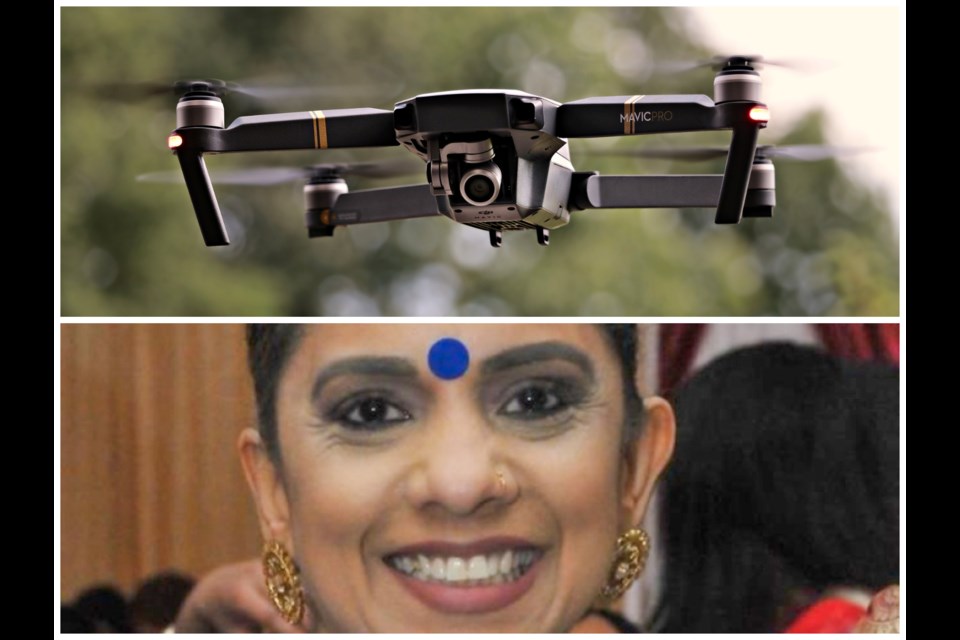Coquitlam Search and Rescue has been called out to aid in locating a missing New Westminster mom and is using a drone to aid in the search.
Paul Baur from RPAS Consulting Group has confirmed he will be helping searchers look for Nirla Sharma, who went missing Sunday, Feb. 23 at 9 p.m.
Two drones, including a Mavic and an Inspire, will be used to photograph the Queensborough shoreline while Coquitlam SAR volunteers will conduct searches of green spaces in the area, located on the eastern tip of Lulu Island on the Fraser River.
Baur said authorities granted approval for the use of the drone to enable a further search of the area, and he will be working directly with a Coquitlam SAR searcher, who will convey information from high-definition video directly to searchers on the ground.
“They expedited the approvals for today. We are operating for weather minimums for our system,” said Baur, whose company has been working with Coquitlam SAR to obtain approvals to be able use drones for searches and recently conducted a search for a missing person at Colony Farm Regional Park.

Thursday's search takes place as New Westminster Police Department is requesting anyone with dashcam footage who may have been driving in the 300-block of Lawrence Street, or Lawrence Street and Ewen Avenue, in Queensborough between midnight and 6 a.m. Monday, Feb. 24 to come forward.
Police say the 44-year-old was last seen Sunday as she went to bed and is believed to have left her home Monday when a family member heard the front door chime at about 4 a.m.
Sharma is believed to have been wearing pink pyjamas and a pink T-shirt when she was last seen but police say she may also be wearing a black jacket with a hood and orange Nike shoes. She is described as South Asian, 5' 3" tall, with a slim build, short, dark hair and several tattoos, including an OM symbol on her left arm and a crown on her right wrist.
Michael Coyle of Coquitlam SAR said the volunteer search team covers areas outside its own when called upon and said drones are a new tool to aid searchers to cover wide areas quickly.
It took a few years to win government approval to use drones for a search and they weren’t used locally until last week at Colony Farm.
Coyle said it’s important to get regulatory approvals to fly a drone to ensure it isn’t operating in air space where other aircraft are flying.
“We call in to Emergency Management BC, we say we'd like to activate a drone, get a tracking order, and they approve it the way they approve a helicopter, which is pretty fitting.”
Drones are an efficient and cost-effective way to support ground searchers, Coyle said.
In addition to daytime searches, drones can also be equipped with special lights to work at night and can use infrared technology to aid in searches, according to Baur, who also trains people to use drones and is an official examiner for those seeking drone pilot certification.
Drones typically fly ahead of ground searchers and have equipment to relay images that search mangers can use to direct crews.
Coyle said they haven’t been used recently in searches around Buntzen Lake because searchers are able to ‘ping’ cellphones to determine the locations of the missing hikers.
Still, he said they are a useful tool in helping to find people, and drones are becoming more common for search teams, especially in rural B.C.




